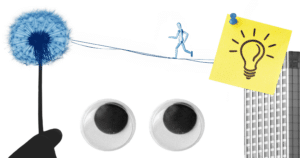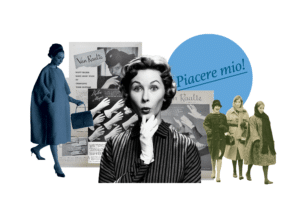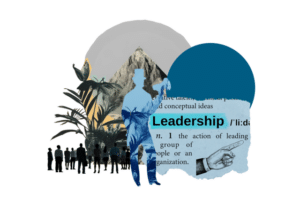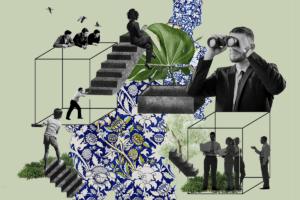There is a combination that companies that nowadays want to stand out cannot ignore: managing the immense amount of information that employees receive daily and the constant need for innovation. The combination of these two elements creates novel managerial challenges that have a lot to do with creativity: the activation of creative resources can prove useful for the organization in figuring out how to channel, organize and socialize knowledge and, consequently, turn it into effective innovation. But dealing with knowledge workers implies a change of mindset for Managers, who find themselves having to manage resources with skills that the Managers themselves may not have and who claim a greater level of independence.
Those who manage so-called knowledge workers, people who bring their knowledge into organizations, today are faced with a major challenge involving diversity: people with the same background, doing the same work, with the same co-workers and following the same procedures may in fact have brains that work very differently, that is, the ways in which information is stored, remembered, and reprocessed may be different.
In more concrete terms, this means that everyone, in their work activities, however similar to the people around them, may develop specific and personal methods for carrying out their tasks and organizing their day in ways that make them efficient.
A standard procedure, therefore, the same method, may not work for all employees in an organization and, indeed, in some cases may prove counterproductive: on the contrary, instead, allowing people freedom of choice and expression even from an organizational point of view can help generate a more productive and stimulating environment.
What if the brain was a library?
To better understand what freedom of organization means, let us try to use an image: a bookcase. When the books the bookcase contains are many, it becomes necessary to organize them in such a way as to find the ones you need with ease, but also, at the same time, to make the area of the bookcase itself beautiful and welcoming. Effectiveness and aesthetics, then.
But what is the right way? There is only one possible answer: it depends. And the difference is made by the mindset of the person organizing. The most popular ways of organizing, as far as bookshelves are concerned, are:
- by cover coast color: for those who have a more visual memory and have a predilection for aesthetics and color impact
- by publishing house or genre: for those who are more likely to cluster and categorize into macro categories
- in alphabetical order by author: for those who tend to prefer a more rational and, in some ways, unquestionable catalog order
- in chronological order: for those who place the temporal dimension in a more prominent position than the aesthetic one
- by height: for those who are precise and prefer the visual impact to return a harmonious order
These are types of organization that have virtually nothing in common except the fact that they involve books, yet they all achieve the two goals mentioned above: effectiveness and aesthetics. There is no one best or worst; it is only what works best for the person organizing books that makes the difference. For themselves, not for everyone.
In fact, if someone came to our house and imposed himself to move books according to their method, we would probably not find anything we needed anymore, and even the aesthetic glance would bother us, as it does not represent us.

Why not apply the same reasoning in the workplace as well?
Let’s imagine that books correspond to the knowledge each person has and the way he or she organizes them to the need for innovation that companies must respond to: how can individuals be left free to organize their bookshelves in the way that suits them best?
This question encapsulates the challenge that Knowledge Worker Managers face, because they must succeed in making work in an organization in which people work in their own way, but must collaborate; in which there are spaces that allow for greater customization and others that are more codified; in which knowledge must flow from the individual to the team.
And the way to meet these needs is to train a combination of two skills: dialogue and creativity.
Dialogue: making knowledge from tacit to explicit
As coaches, we have often observed in our projects how organizational problems that seem insurmountable can be solved with an action that is both simple and complex at the same time: talking to each other. Again, dialogue and effective organization are two very related aspects: investing time to think together with the team about how best to organize and create solid but flexible procedures that fit everyone’s needs means creating a moment of value that will have a positive impact on both performance and growth of individuals.
Japanese scholars Ikujiro Nonaka and Hirotaka Takeuchi, in their 1995 book The Knowledge Creating Company, which aims to highlight the social dynamics behind knowledge creation in organizations, theorize precisely how it is active reflection on experience, a key element in Coaching as well, that transforms tacit knowledge into explicit knowledge. The authors show how this transition occurs not through codified management practices, but through forms of social interaction that allow specific forms of communication to be implemented.
Dialogue, therefore, makes it possible to identify the areas where action is needed and to establish the spaces within which people can move freely, that is, within which everyone is free to put his or her creativity into practice.
Creativity: everyone has it, few use it
Culturally we are used to dividing the world into two clusters of people: creative and non-creative, a division that becomes concrete especially in companies. Actually, this is not the case. As David and Tom Kelley, authors of the book Creative Confidence: Unleashing the Creative Potential Within Us All, state:
It turns out instead that creativity is not a rare gift enjoyed by a lucky few, but a fundamental component of human thinking and behavior.
Creativity therefore is not a superpower available exclusively to gifted people, but a capacity that affects everyone; one just needs to have the courage to keep it trained. The more correct division, in fact, would be between people who fear their creativity and those who do not. The fear that people have of expressing their creative side stems from a social conception that already in schools requires children to suppress it in favor of the more analytical or logical side. Over time, this silently induced repression produces in adults a real fear of expressing creativity, because they are afraid that it will expose them to the judgment of others and of not living up to their ideas.
READ ALSO: Tra alte performance e serenità mentale
The value of dialogue and creativity in companies
Repressing our creative instincts is an unpleasant and unhelpful strategy, as well as a habit that can come to harm us without us even realizing it. Unused creativity turns into suffering, anger, judgment, pain and shame: not recognizing or expressing our creative side can generate depression, insecurity, stress and anxiety.
Seth Godin, in his book The Practice. Creative Activity is an Everyday Choice, explains very well what are the risks of pursuing a work environment in which creativity is systemically castrated, that is, causing malaise, dissatisfaction and frustration. These are all feelings that can be countered through a corporate culture marked by dialogue.
On the contrary, in fact, providing an environment in which people feel free to talk, express their opinions, and harness creativity in organizing and performing tasks is valued and incentivized leads to a number of benefits, both for the individual and for the organization as a whole:
- It stimulates critical thinking and problem solving: it allows people to recount their own experiences, evaluate situations, and propose solutions that deviate from “it’s always been done this way,” facilitating learning and the possibility of seizing new opportunities.
- It stimulates teamwork: a person’s idea can improve with sharing and brainstorming stages. Precisely because not all people think in the same way, dialoguing and reasoning together can help capture different viewpoints and angles that one person alone would not have considered, leading out of deadlocks, improving the idea itself and strengthening bonds between collaborators.
- It predisposes to empathy and listening: expressing one’s own ideas and considering those of others helps the process of empathizing with the other, putting people in a position to better understand emotions and needs.
- It increases productivity: the drive to share and find new solutions, the greater involvement given by dialogue, the stronger connections with colleagues, are all elements that give greater impetus to the performance of those who are working.
- It decreases anxiety and stress and increases self-confidence: when the fear of others’ judgment is lessened and the freedom to express oneself is rediscovered, one feels less a prisoner of one’s work, and this also has a beneficial effect on people’s moods.
For knowledge workers as well as for organizations, then, being creative is a choice, but also an opportunity. Creating an environment in which dialogue and creative spirit are constantly stimulated is like having many libraries at one’s disposal: each with its own reference texts, each organized in the most effective way, but all able to make their own contribution, free to contaminate with other libraries and to bring to the company the expertise and beauty that make them themselves.





